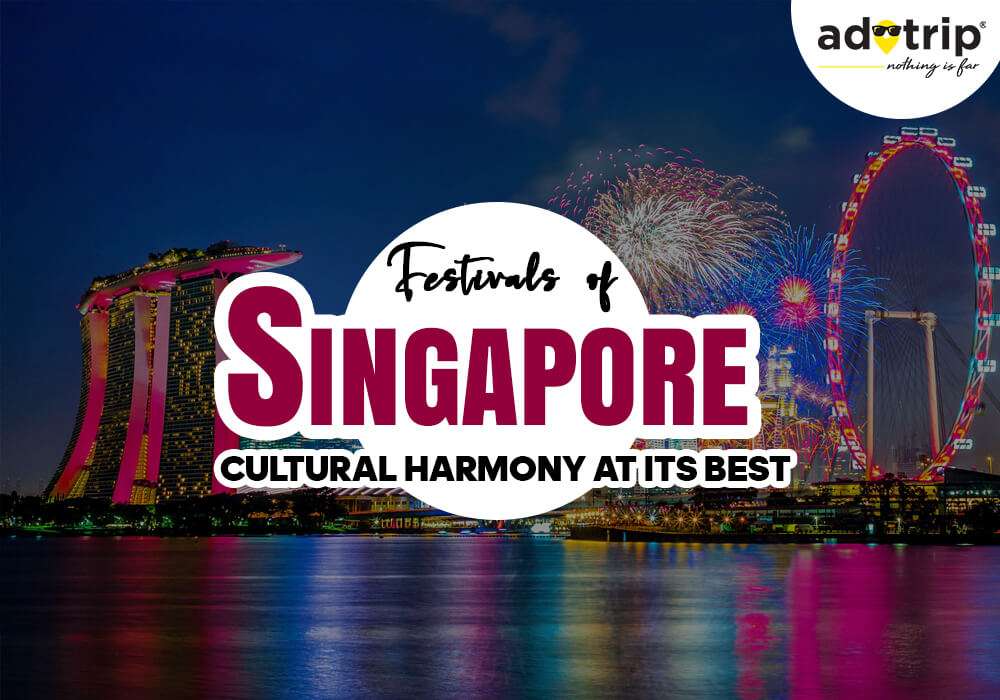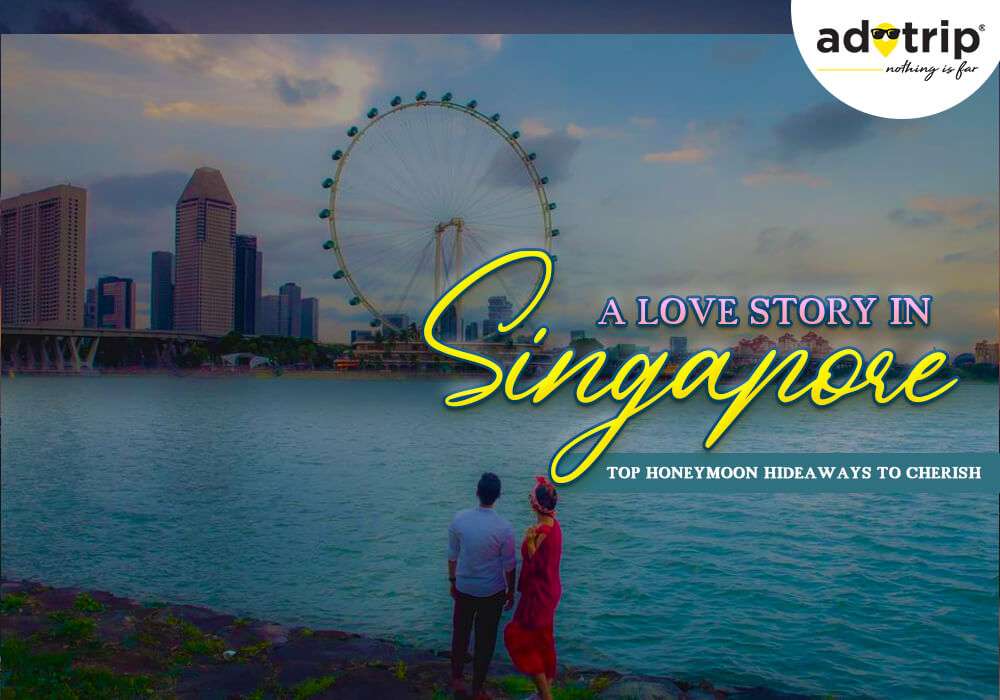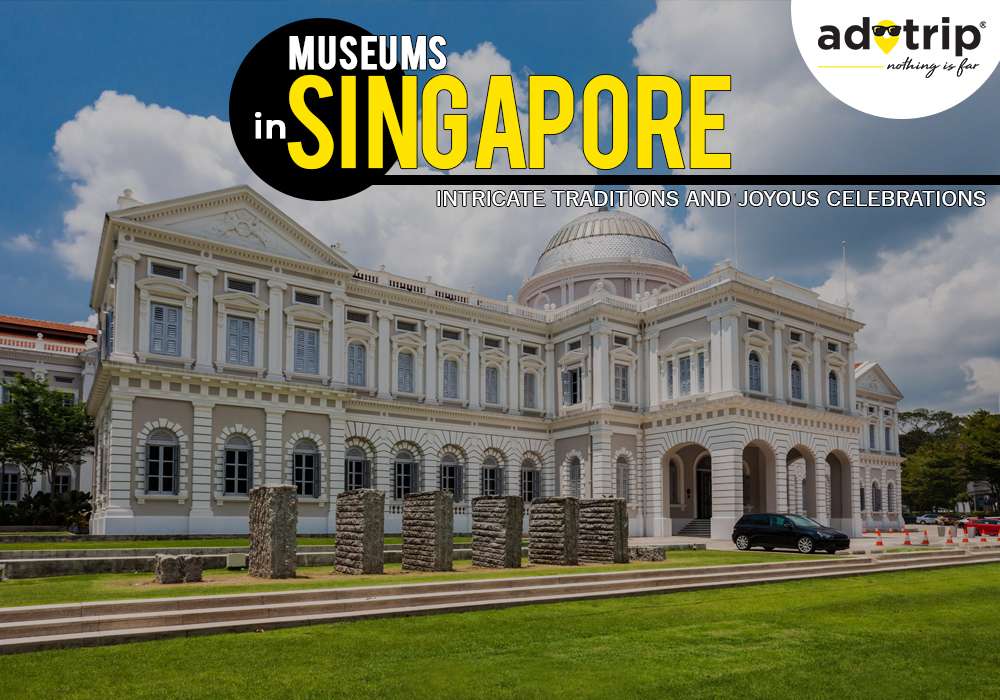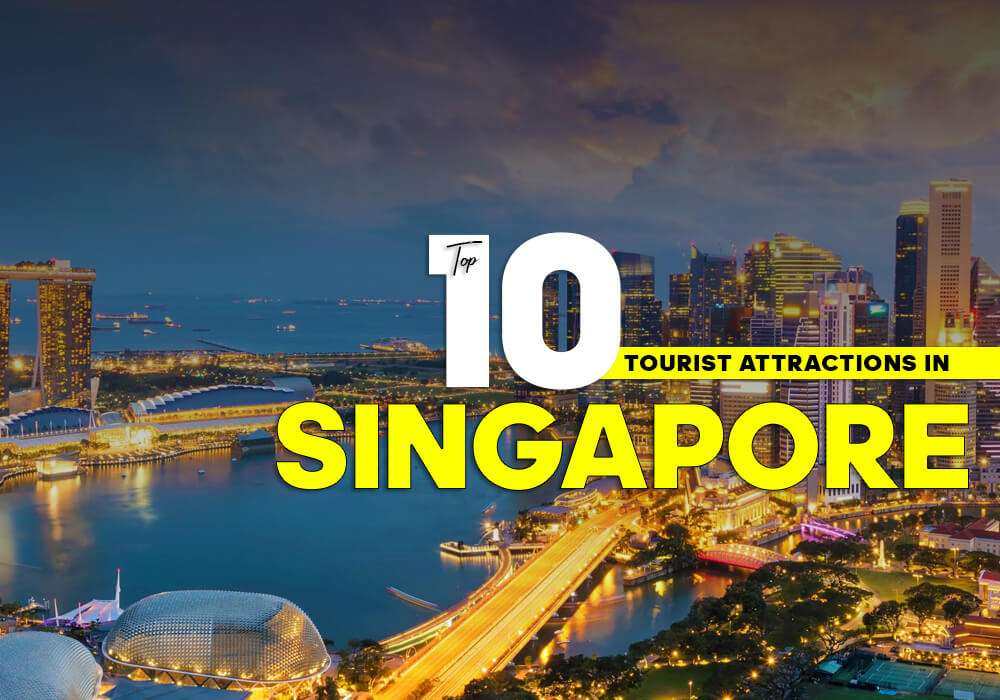
Last Updated At: 05-Feb-2024
Singapore vs Malaysia : Which is Better To Visit In 2024
Southeast Asian neighbours Singapore and Malaysia have strong historical, cultural, and economic linkages that have influenced the area's growth. When we go for the Singapore and Malaysia comparison, we see that both nations have seen remarkable modernisation and expansion, forging different identities while retaining a certain connection that stands as testimony to their shared history. Singapore, known for its effective government and powerful economy, has become a major financial centre and a technological pioneer. Its position as a symbol of wealth in the area results from its carefully planned urban landscape, multicultural society, and modern infrastructure. In contrast, Malaysia, with its fusion of Malay, Chinese, Indian, and indigenous traditions, enjoys a varied cultural mosaic. The diverse landscapes of the nation, which span from the bustling city to the peaceful countryside, show its exceptional natural beauty.
The cost of living in Singapore or Malaysia is 72% cheaper than in Singapore and there are numerous job opportunities in Singapore or Malaysia. The geographical position of the two nations has fostered partnerships that have benefited both economies and encouraged tourist and cultural interactions. In basic terms, the relationship between Singapore and Malaysia is a peaceful blend of common history and personal development.
Weather: Singapore or Malaysia
Tropical climates are common in Singapore and Malaysia, with year-round high temperatures and humidity. The weather in Singapore is generally stable, with moderate temperatures and high humidity. Due to its equatorial location, rainfall is high and is equally spread throughout each month. However, the climates on the east and west coasts of Malaysia are marginally different. Throughout the monsoon season, which lasts from November to March, the west coast, particularly Kuala Lumpur, experiences a lot of rain. A comparable monsoon season lasts from November to February along the east coast, which encompasses Kota Kinabalu and Kuching. Visitors should be prepared for Singapore or Malaysia weather and unexpected rain showers while seeing these dynamic Southeast Asian nations because both feature lush vegetation due to their plentiful rainfall.
Natural Beauty: Singapore or Malaysia
You must plan to visit Singapore or Malaysia for vacation. Both have distinctively beautiful natural environments. Despite being a small metropolitan city-state, Singapore has carefully conserved natural wonders. Innovative horticulture is displayed in the magnificent Gardens by the Bay and the verdant Singapore Botanic Gardens. Malaysia offers a wider variety of natural scenery due to its greater area. Malaysia's blend of modernity and nature is enthralling, from the renowned Petronas Twin Towers in Kuala Lumpur to the beautiful beaches of Langkawi and Penang. The nation is renowned for its extensive rainforests, with national parks, including Taman Negara and Gunung Mulu National Park, displaying diverse wildlife. Additionally, the Cameron Highlands' natural and cultural charm offers a magnificent getaway. While Malaysia's larger size enables a wider choice of natural attractions, making it a treasure trove for visitors seeking diverse natural beauty, Singapore impresses with its exquisite urban vegetation.
Major Attractions in the Singapore
- These are just a few of Singapore's many attractions, which display its spectacular natural beauty and serene island conditions.
- Marina Bay Sands: A three-tower wonder of modern architecture with a boat-shaped rooftop park.
- Gardens by the Bay: Futuristic gardens with the flower dome conservatory and supertree grove.
- Sentosa Island: A vacation island boasting beaches, theme parks, and various entertainment alternatives.
- Universal Studios Singapore: A well-known entertainment park with a movie theme on Sentosa Island.
- Merlion Park: Singapore's national symbol, the Merlion statue, may be seen at this iconic park against a city skyline backdrop.
- Singapore Zoo: Its open, natural boundaries make it a renowned wildlife park.
- Night Safari: The first nocturnal wildlife park in the world featuring animals in their natural environment at night.
- Singapore Botanic Gardens: Numerous gardens with a national orchid garden that UNESCO lists.
- Chinatown: A lively neighbourhood rich in Chinese heritage, temples, and markets.
- Little India: A vibrant area with temples, food shops, and Indian culture on exhibit.
- Singapore Flyer: Providing broad vistas of the city and Marina Bay is a huge ferris wheel.
- Sea Aquarium: A significant oceanarium with a wide range of marine life and aquatic environments.
- Asian Civilisations Museum: Asia's numerous cultures and civilisations are on display in this museum.
- National Gallery Singapore: A large collection of Southeast Asian art is situated at a museum with two old buildings as its location.
- Singapore River Cruise: A tranquil boat cruise by major monuments along the historic Singapore River.
Major Attractions in Malaysia
These are just a few of Malaysia's many attractions, highlighting its many natural and cultural beauties.
- Petronas Twin Towers, Kuala Lumpur: Famous twin towers lit up at night.
- Batu Caves, Selangor: A golden monument and impressive limestone caves.
- Langkawi Island, Kedah: Beautiful beaches and a lot of greenery.
- Penang Hill, Penang: Aerial view of Penang Hill and the surrounding area.
- Melaka Historic City, Melaka: Vibrant colonial structures next to a river.
- Taman Negara National Park, Pahang: A dense canopy walkway through a forest.
- Cameron Highlands, Pahang: Tea plantations lead the rolling slopes.
- Kuala Lumpur Bird Park: A tropical aviary with colourful birds.
- Sepilok Orangutan Rehabilitation Centre, Sabah: Swinging from a tree, an orangutan.
- Mount Kinabalu, Sabah: Majestic alpine peak emerging through the fog.
- Sipadan Island, Sabah: Clean seas with a variety of marine life.
- Georgetown, Penang: Narrow street with historic storefronts.
- Perhentian Islands, Terengganu: crystal clear sea with white sands.
- Islamic Arts Museum Malaysia, Kuala Lumpur: Islamic architecture with intricate features.
- Johor Bahru Old Chinese Temple, Johor: Chinese temple's ornate facade.
Book Malaysia Tour Packages
Cuisine: Singapore or Malaysia
Due to their shared history, while living in Singapore or Malaysia, there are many things to experience in common. They also have unique flavours and culinary traditions. Hainanese chicken rice and chilli crab are well-known Singaporean delicacies showcasing the country's rich cultural fusion. Various Chinese, Malay, Indian, and Peranakan delicacies are available at the city's hawker centres. However, the regional variations in Malaysian cuisine range from the rich, spicy laksa of Penang to the savoury rendang with Minangkabau influences. Satay skewers and the fragrant rice dish nasi lemak are very popular. Both countries have mouth-watering street food, but Singapore often emphasises efficiency and cleanliness, while Malaysia leans more toward a rustic appeal. Ultimately, food lovers can choose from a variety of tasty dishes strongly entrenched in cultural tradition, whether Malaysian or Singaporean cuisine.
Cultural Experiences: Singapore or Malaysia
Malaysia and Singapore both provide distinctive cultural experiences that showcase their different societies. Through festivals, including Deepavali and Chinese New Year, where the streets come alive with vibrant decorations and traditional performances, Singapore celebrates the diversity of its ethnic groups. Cultural hubs like Little India and Chinatown and the contemporary Gardens by the Bay provide examples of the country's vibrant culture. In contrast, the traditions of the Malay, Chinese, Indian, and indigenous peoples make up Malaysia's cultural tapestry. Visitors can participate in celebrations, including Thaipusam and Hari Raya Aidilfitri, to taste local culture. Discovering the vibrant markets of Petaling Street in Kuala Lumpur or the ancient city of Penang reveals the depth of the nation's history. Both locations provide immersive cultural adventures, whether it's the present-day elegance of Singapore or the colourful fusion of cultures in Malaysia.
Currency: Singapore or Malaysia
The Singapore Dollar (SGD) is the country of Singapore's official currency. It is denoted by the symbols "$" or "S$" in order to distinguish it from other currencies denominated in dollars. Its face value is one dollar, and the abbreviation for it is "SGD." Malaysia uses the Malaysian Ringgit (MYR), represented by the letter "RM." The Ringgit has been divided into 100 smaller parts, similar to the Singapore Dollar. Even though both currencies are identified in their respective nations, choosing the right one is crucial to ensure everything is clear. Travellers should keep up with the most recent exchange rates before making any financial transactions because the exchange rates between these currencies may vary based on economic factors.
Visa: Singapore or Malaysia
Travellers can obtain visas in many ways in Singapore and Malaysia. Except for some passport holders who can enter Singapore without a visa for brief periods, most tourists must get a visa before travelling there. The nation is renowned for its effective immigration policies. Malaysia, on the other hand, has various entrance standards dependent on nationality. Some nationalities are exempt from visa requirements for a set period, while others may require applying for a visa in advance or receiving one upon arrival. A huge number of tourists visit Malaysia each year because of its rich culture and landscapes. To secure a simple and hassle-free entry into either Singapore or Malaysia, travellers are encouraged to research the individual visa restrictions about their nationality well before their journey so that travelling to Singapore or Malaysia safer for you.
Nightlife & Entertainment: Singapore or Malaysia
Singapore and Malaysia both have a thriving nightlife and entertainment scene that can accommodate a range of tastes. Singapore's nightlife culture is chic and contemporary, with various premium pubs, rooftop lounges, and nightclubs, particularly in areas like Clarke Quay and Marina Bay Sands. The entertainment options available in the city, which range from conventional performances at cultural institutions to innovative theatre shows, reflect the city's wide cultural diversity. Nightlife in Malaysia differs from city to city. Kuala Lumpur has a vibrant nightlife that includes a variety of trendy nightclubs, places to hear live music and busy street markets. Night markets and historic locations come to life in Penang's more relaxed nightlife scene. Conversely, Langkawi offers a more relaxed island atmosphere with seaside bars and sunset cruises. Both nations have theme parks for amusement; Malaysia has Legoland and Sunway Lagoon, while Singapore has Universal Studios.
Both locations offer interesting nightlife and entertainment, but Malaysia's combination of cosmopolitan and culturally influenced options contrasts Singapore's more regulated surroundings.
Whether you are attracted to Malaysia's cultural diversity or Singapore's modern improvement, both places provide life-changing experiences. Each offers a distinct adventure worth experiencing, from Malaysia's rich tapestry of customs to Singapore's modern cityscape. Book your tickets to the tropical paradise of your choice using Adotrip.com for memorable nightlife and experiences to remember. The magic is ready to begin!
With us, nothing is far!
Book Singapore Tour Packages
Frequently Asked Questions About Singapore or Maldives
Q1. What are the key differences between Singapore and Malaysia in terms of culture?
A1. Singapore and Malaysia have vastly different cultures, although sharing significant historical connections. Malaysia's culture combines Malay, Chinese, Indian, and indigenous traditions, whereas Singapore's culture is impacted by its multicultural community.
Q2. How do the political systems of Singapore and Malaysia differ?
A2. Singapore works as a parliamentary republic with a strong executive branch and a single-party majority, while Malaysia conducts its affairs as a federal constitutional monarchy featuring a multi-party parliamentary democracy.
Q3. What are the major tourist attractions in both Singapore and Malaysia?|
A3. Here are some of the best tourist attractions in both Singapore and Malaysia mentioned below:-
Singapore
- Gardens by the Bay
- Merlion Park
- Marina Bay Sands
- Universal Studios Singapore
- Singapore Botanic Gardens
Malaysia
- Petronas Twin Towers
- George Town, Penang
- Langkawi
- Malacca
- Batu Caves
Q4. How do Singapore and Malaysia compare in terms of food and cuisine?
A4. A rich culinary history inspired by Malay, Chinese, Indian, and other cultures exists between Singapore and Malaysia. Both cities represent their diverse communities by providing a variety of street cuisine, food centres, and traditional dishes.
Q5. What are the economic strengths and industries of both Singapore and Malaysia?
A5. With a strong financial hub and modern technological infrastructure, Singapore excels in finance, technology, and shipping. The palm oil, electronics, travel, and natural resources industries, especially oil and gas, are Malaysia's advantages.
Q6. How do the education systems of Singapore and Malaysia differ?
A6. Singapore's educational system, which often does well in international assessments, strongly emphasises rigorous academic standards and global competitiveness. The system in Malaysia is more varied, accommodating people from different linguistic and ethnic origins.
Q7. What are some key cultural festivals celebrated in both Singapore and Malaysia?
A7. In keeping with its cosmopolitan society, Singapore observes holidays, including Chinese New Year, Deepavali, and Hari Raya Aidilfitri. The festivals of Malaysia, which highlight its numerous ethnic communities, include Deepavali, Chinese New Year, and Hari Raya Aidilfitri.
Q8. How do Singapore and Malaysia approach environmental conservation and sustainability?
A8. Singapore's main objectives are water management, sustainable infrastructure, and green urban planning. Malaysia strongly emphasises ecotourism, forestry, and biodiversity conservation projects, all of which seek to strike a balance between environmental preservation and development.
Q9. What are the major transportation and infrastructure differences between the two countries?
A9. Singapore is renowned for effective public transportation, including a sizable MRT system. With continuous construction projects, Malaysia's increased geographical area has various transportation options, including railways, buses, and motorways.
Q10. How do Singapore and Malaysia handle the tourism and hospitality industries?
A10. Singapore strongly emphasises luxury travel and provides upscale lodging and attractions. Malaysia strongly emphasises varied tourism, promoting ecotourism, cultural heritage, and accessible travel opportunities while presenting its stunning landscape and vibrant culture.
--- Published By Adotrip
Latest Blogs

Long Weekends In India 2025 - List of Holidays

Kazakhstan Travel Guide 2025: Affordable Luxury, Visa Free E...

Think Ayodhya is Just Temples? Discover Its Hidden Artistic...

Why Azerbaijan is the Best Budget Friendly Alternative to Sw...













.png)
 Dubai
Dubai Malaysia
Malaysia USA
USA





